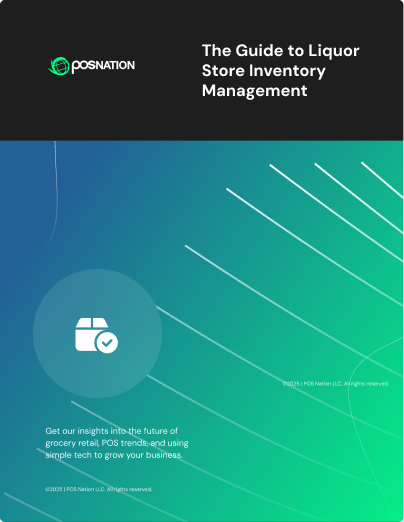Do you ever feel like your retail store is hemorrhaging money but you can't pinpoint the leak? You're not alone!
You’ve got incredible products, a fantastic team, and a loyal customer base. But the numbers don't add up in your financial statements. You’re making sales, but your profits are low or nonexistent.
What’s going on? Well, we might just have the answer: cost to revenue ratio. You're in trouble when you spend more to produce your products than you make selling them.
But we’re here to help.
In this article, we’ll unravel the cost to revenue ratio, how it affects your profitability and overall store growth, and how to improve a poor ratio and cash flow management. This metric can provide the clarity you need to make informed decisions about cost management and revenue generation.
What Is the Cost to Revenue Ratio?
Simply put, the cost to revenue ratio is a financial metric that measures how much you spend to generate each dollar of revenue. To calculate it, divide the cost of goods sold (COGS) by your total revenue. The COGS is any direct cost incurred by producing your goods or services, and total revenue is the total amount of money you generate from sales.
Here is a quick example:
- Cost of goods sold: $100,000
- Total revenue: $200,000
- Cost to revenue ratio: 50%
You spend $100,000 to generate $200,000 in revenue for a cost to revenue ratio of 50%.
This number gives you a snapshot of your store’s financial health. It’s not the only metric; you’ll also want to monitor profit margins. Knowing the relationship between various financial metrics is crucial. You’re not just selling products; you’re trying to maximize profitability and keep your store running.
Related: The Guide to Grocery Store Profit Margins (and How To Improve Them)
Why Is the Cost to Revenue Ratio Important?
If your cost to revenue ratio is high, you’re spending too much money to generate your revenue. Considering COGS includes rent, utilities, and manufacturing costs, how could you cut costs? And is that the best thing to do?
If your ratio is low, you’re doing a great job of controlling expenses while maximizing revenue. There are always opportunities to improve! Understanding and interpreting this number is crucial to your store’s success — it can help you identify inefficiencies, strategize cost management, optimize pricing, and, ultimately, increase profits.
In retail, your costs are generally divided into fixed and variable costs. Fixed costs are things like rent and salaries, which typically stay the same for long periods. Variable costs change with your sales volume and might include utilities and inventory.
Naturally, spending too much on fixed costs is risky. What if you have a slow sales period? Likewise, if your variable expenses are too high, your profit margins might shrink as you sell more. Using your point of sale (POS) system to track sales data and seasonal changes here is a good idea to help prepare for fluctuations.
What Is a Good or Bad Cost to Revenue Ratio?
A lower cost to revenue ratio is ideal — who doesn’t want to spend less and generate more revenue? However, what qualifies as a good ratio depends on several factors:
- Industry standards: Cost to revenue ratios differ between retail sectors. What's suitable for a grocery store may not be good for a clothing boutique.
- Business size: Bigger companies can maintain a lower ratio because of economies of scale.
- Business age: New businesses may have higher initial costs as they establish their brand, so they may have a higher cost to revenue ratio at first.
- Seasonality: Businesses with seasonal products might see their cost to revenue ratios fluctuate with the seasons.
What are the red flags to look out for? A high ratio that keeps increasing over time is a sign of trouble. Your costs might be spiraling out of control, or you’re not selling enough to cover them. The last thing you need is financial strain. The earlier you spot red flags, the better.
Let’s look at a couple of examples.
Good
‘Local Organix’ is a store specializing in local and organic produce. They source products locally, keeping transportation and supply chain costs low. They use a robust POS system to manage inventory and reduce shrinkage. They market their products to their ideal customers willing to pay a premium for organic and locally-sourced products, leading to higher revenue.
Bad
‘Buy Organic’ is our first store’s local competitor. They also specialize in organic produce but failed to negotiate favorable terms with suppliers. They track inventory manually, and products often get forgotten in the warehouse. They often face situations of overstocking, leading to shrinkage, or understocking, leading to lost sales.
Strategies To Improve Your Cost to Revenue Ratio
You have to spend money to make money, right? It’s an old adage, but it’s true. Yet it only tells half the story. You also need to keep the money you make! You can improve your cost to revenue ratio and enjoy profits by reducing costs and increasing revenue.
Reducing Costs: Is it Always the Best Move?
If you can’t see a way to increase revenue, you’ll likely look for ways to cut costs. But you must tread carefully. Reducing costs too much might lead to defective products, rush jobs, and a lack of expertise. A loss of quality will lead to a loss of customers.
- Efficient operations: Find ways to improve your operations. Reducing waste and managing inventory effectively are easy ways to save on costs. Overstocking can lead to increased storage costs and waste due to product spoilage, while understocking can lead to missed sales opportunities. Instead of manually counting stock, use a POS system to automate tasks and save on labor.
- Negotiate with suppliers: Building good relationships with suppliers and vendors is essential. They want your business, but a good relationship ensures efficient delivery times and quality. You can also ask for discounts for bulk purchases, longer payment terms, or other concessions.
- Energy efficiency: Although switching to energy-efficient lighting might be expensive initially, it can lead to significant savings in the long run.
Increasing Revenue: The Other Side of the Coin
Once you have a handle on costs, find ways to increase revenue.
- Product differentiation: If you offer unique products, shout about it! You want to stand out from your competition. Good ways to stand out are offering unique, local products, creating unique shopping experiences, and focusing on excellent customer service.
- Upselling and cross-selling: Get creative with your inventory. Your staff can suggest higher-priced, superior, or complementary products to customers. Consider your store layout, too. Place products that complement each other together, so customers can get bundle deals.
- Customer retention: Customer loyalty programs give customers perks and keep them returning to your store. It’s often cheaper to retain customers than to acquire new ones. Excellent customer service goes a long way.
Leverage Your POS System To Improve Cost to Revenue Ratios
Your POS system is more than a tool for processing transactions. It’s a goldmine of data, and you can use it to improve your profit margin and cost to revenue ratio.
Here’s how:
- Inventory management: Your POS system should be able to track inventory in real time. You’ll know what’s flying off the shelves and what isn’t. Analyzing sales reports help prevent overstocking and understocking. Some systems let you set up reorder alerts or even automated reordering when stock levels dip below a specific number.
- Efficient checkout processes: Some POS systems have unlimited inventory capabilities and integrate with scanners and scales. This helps speed up checkout processes, leading to fewer lines and happier customers.
- Data analysis: Modern POS systems collect a wealth of data with every transaction, including what items are selling, when they sell, who's buying them, and so on. Analyzing this data helps you spot trends, understand customer behavior, and assess product performance. Look for POS systems with prebuilt and customizable reports, so you can make the most of your data.
- Customer relationship management (CRM): Some POS systems come with built-in CRM features so you can collect and store information about your customers. Use this information to inform your marketing strategies, personalize promotions, and implement loyalty programs.
- Cost tracking: POS systems track your sales-related expenses in real time. You’ll have data on sales, returns, discounts, and taxes. This helps you keep tabs on your cash flow and optimize spending.
- Vendor and shipping management: Advanced POS systems help manage relationships with vendors, including tracking orders, recording payment terms, and storing contact information. You can also streamline the shipping process by integrating with shipping carriers, tracking deliveries, and updating inventory automatically.
Cost to Revenue Ratio: Helping You Win
Cost to revenue is an invaluable metric. It measures your financial health and whether you efficiently manage your store. Tracking this ratio helps you determine where to reduce costs and gives you an impetus to find creative ways to increase revenue.
Increasing revenue is less risky than trying to reduce costs. But you can have the best of both worlds when you invest in a robust POS system. At POS Nation, we help thousands of retailers to:
- Streamline operations
- Manage inventory
- Collect data and understand their customer base
- Create reports for data-driven decision making
- And more!
Do you want to see how else a POS system can help your store? Schedule a demo with our retail experts today. Alternatively, check out our free Buyers’ Guide, so you can ask the right questions and confidently choose a POS provider for your store.







 by Spence Hoffman
by Spence Hoffman

 by Graham Hoffman
by Graham Hoffman

